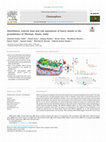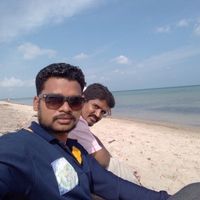Papers by Bidyutjyoti Baruah
Springer proceedings in earth and environmental sciences, 2022

Environmental Monitoring and Assessment, Apr 7, 2022
There are several causes for the increasing rate of deglaciation, such as global warming, increas... more There are several causes for the increasing rate of deglaciation, such as global warming, increase in the concentration of black carbon, and extensive use of fossil fuels which causes the change in the overall climate system and shifting glacier ecosystem. This study was conducted on Pindari valley glaciers part of lesser Himalaya in Uttarakhand. This study investigates to (1) monitor and map change in the frontal length or the snout region of a glacier that can be studied with the help of remote sensing techniques and (2) evaluate the decadal and annual retreat rate of the glacier from 1972 to 2018. The study applies both the maximum likelihood classifier and NDSI spectral indices based classification for extracting the glacier region for different periods. This study reveals a significant amount of retreats taking place in the selected glaciers, Pindari, Sundardhunga, Kafni, and Baljuri base camp glaciers, from 1972 to 2018 as 1719.95 m, 1751.21 m, 1057.01 m, and 810.78 m, respectively. The highest amount of change is noticed in Pindari and Sundardhunga glaciers, higher than ~ 1700 m. The study analyses temporal variation of the annual and decadal retreat rate in the Pindari valley glaciers, which would be helpful for the further study of the other glaciers.
Research Articles by Bidyutjyoti Baruah

Chemosphere, 2024
Metal contamination in drinking water has drawn attention since it gravely jeopardizes human heal... more Metal contamination in drinking water has drawn attention since it gravely jeopardizes human health. This study was conducted in pre- and post-monsoon season in 2021 at Dhemaji, Assam, India. It characterized metal pollutants in groundwater, their distribution, possible sources, and evaluated the potential toxicity and associated health risk assessment. The seasonal mean concentration of Fe in both seasons is observed highest followed by Mn, Zn, Cu, As, and Ni. Furthermore, the metal concentrations during pre-monsoon are comparatively higher. The geogenic processes and agricultural practices are the major sources of groundwater metal contamination as evident from the statistical analysis. The different pollution indices viz. Heavy-metal Pollution Index (HPI),
Heavy-metal Evaluation Index (HEI) and Degree of Contamination (Cd) suggested that groundwater is not suitable for drinking uses. The Heavy Metal Toxicity Load (HMTL) suggesting As, Co, Mn and Hg should be
removed from the groundwater to ensure safety. Water pollution indices (WPI) suggest that Fe, Mn, As and Ni are the main pollution-causing metals in the study area which may be restored under the BIS and WHO limit by diluting the water. The human health risk has been calculated by carcinogenic and non-carcinogenic risk assessment. The non-carcinogenic risk for adults and children is within the threshold limit. The carcinogenic risk shows that continuous exposure of As and Ni may give rise to cancer among adults and children in the region. Therefore, comprehensive groundwater quality monitoring with well-planned treatment should be needed to provide safe and clean drinking water in the studied area.









Uploads
Papers by Bidyutjyoti Baruah
Research Articles by Bidyutjyoti Baruah
Heavy-metal Evaluation Index (HEI) and Degree of Contamination (Cd) suggested that groundwater is not suitable for drinking uses. The Heavy Metal Toxicity Load (HMTL) suggesting As, Co, Mn and Hg should be
removed from the groundwater to ensure safety. Water pollution indices (WPI) suggest that Fe, Mn, As and Ni are the main pollution-causing metals in the study area which may be restored under the BIS and WHO limit by diluting the water. The human health risk has been calculated by carcinogenic and non-carcinogenic risk assessment. The non-carcinogenic risk for adults and children is within the threshold limit. The carcinogenic risk shows that continuous exposure of As and Ni may give rise to cancer among adults and children in the region. Therefore, comprehensive groundwater quality monitoring with well-planned treatment should be needed to provide safe and clean drinking water in the studied area.
Heavy-metal Evaluation Index (HEI) and Degree of Contamination (Cd) suggested that groundwater is not suitable for drinking uses. The Heavy Metal Toxicity Load (HMTL) suggesting As, Co, Mn and Hg should be
removed from the groundwater to ensure safety. Water pollution indices (WPI) suggest that Fe, Mn, As and Ni are the main pollution-causing metals in the study area which may be restored under the BIS and WHO limit by diluting the water. The human health risk has been calculated by carcinogenic and non-carcinogenic risk assessment. The non-carcinogenic risk for adults and children is within the threshold limit. The carcinogenic risk shows that continuous exposure of As and Ni may give rise to cancer among adults and children in the region. Therefore, comprehensive groundwater quality monitoring with well-planned treatment should be needed to provide safe and clean drinking water in the studied area.